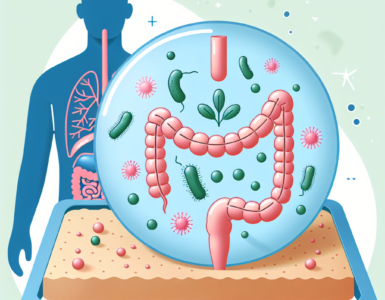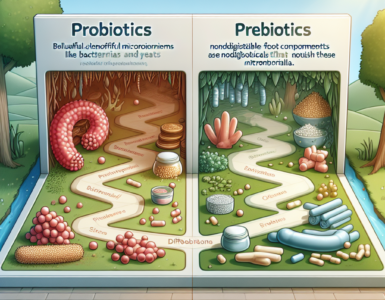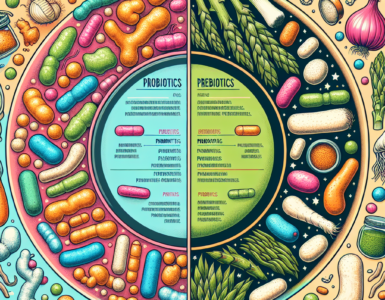Understanding Meal Replacement Shakes
Meal replacement shakes have gained popularity as a convenient and nutritious option for individuals striving to achieve a healthy weight. In this section, we will delve into what meal replacement shakes are and explore their benefits.
What are Meal Replacement Shakes?
Meal replacement shakes are pre-packaged beverages designed to provide a balanced and convenient alternative to a traditional meal. They typically come in powder form and can be mixed with water, milk, or other liquids. These shakes aim to provide a comprehensive blend of essential nutrients, including proteins, carbohydrates, fats, vitamins, and minerals.
Meal replacement shakes are formulated to offer a complete and well-rounded meal, ensuring that individuals receive adequate nutrition while controlling their calorie intake. They are often used as a substitute for one or two meals in a day, offering a quick and easy solution for those with busy lifestyles or limited access to healthy food options.
Benefits of Meal Replacement Shakes
Meal replacement shakes offer several benefits to individuals seeking a healthy weight and balanced nutrition:
- Convenience: Meal replacement shakes provide a convenient option for individuals who are on the go or have limited time to prepare a nutritious meal. They can be easily prepared and consumed, making them an ideal choice for busy schedules.
- Controlled Calorie Intake: Meal replacement shakes allow individuals to monitor their caloric intake more effectively. These shakes are often portion-controlled and provide a predetermined number of calories, making it easier to manage calorie intake and create a calorie deficit for weight loss.
- Balanced Nutrition: Meal replacement shakes are formulated to provide a balanced nutritional profile. They are designed to contain a mix of macronutrients (proteins, carbohydrates, and fats) as well as essential vitamins and minerals. This helps ensure that individuals receive the necessary nutrients while keeping their overall calorie intake in check.
- Portion Control: Meal replacement shakes offer portion-controlled servings, which can be beneficial for individuals who struggle with portion sizes or overeating. By replacing a meal with a shake, individuals can avoid the temptation to consume larger portions or unhealthy food choices.
- Weight Management: Incorporating meal replacement shakes into a balanced diet and exercise routine can contribute to weight management goals. These shakes can help individuals adhere to a calorie-controlled diet while providing the necessary nutrients to support overall health and well-being.
It’s important to note that meal replacement shakes should not be used as a long-term solution for weight management. They are most effective when used as part of a comprehensive approach that includes a varied and balanced diet, regular physical activity, and a focus on overall lifestyle changes.
By understanding the concept of meal replacement shakes and their associated benefits, individuals can make informed decisions about incorporating them into their dietary routine to support their nutrition goals.
Considerations for Choosing the Best Meal Replacement Shakes
When selecting the best meal replacement shakes, there are several important factors to consider. These considerations will help ensure that the shakes provide a balanced nutritional profile, contain beneficial ingredients, and align with your caloric needs and macronutrient ratios.
Balanced Nutritional Profile
A key aspect of choosing a meal replacement shake is assessing its nutritional profile. Look for shakes that provide a well-rounded mix of macronutrients (carbohydrates, proteins, and fats) as well as essential vitamins and minerals. A balanced nutritional profile will help support overall health and keep you feeling satisfied.
| Nutrient | Daily Recommended Intake (DRI) |
|---|---|
| Carbohydrates | 45-65% of total daily calories |
| Proteins | 10-35% of total daily calories |
| Fats | 20-35% of total daily calories |
Ingredients to Look For
When examining the ingredients list, prioritize shakes that contain natural and whole food-based ingredients. Avoid shakes that are high in added sugars, artificial sweeteners, or preservatives. Instead, opt for shakes that include ingredients such as fruits, vegetables, whole grains, and quality sources of protein.
Some beneficial ingredients to look for in meal replacement shakes include:
- Protein sources: Look for shakes that contain high-quality proteins such as whey, pea, soy, or hemp protein. These proteins provide essential amino acids and help promote satiety.
- Fiber sources: Shakes that contain fiber-rich ingredients like oats, chia seeds, or flaxseeds can help support digestion and provide a feeling of fullness.
- Healthy fats: Choose shakes that include sources of healthy fats like nuts, seeds, or avocado. These fats are important for nutrient absorption and long-lasting energy.
Caloric Content and Macronutrient Ratio
The caloric content and macronutrient ratio of meal replacement shakes are key considerations, especially if you have specific health or weight goals. The caloric content should align with your overall daily caloric needs, whether you are aiming to maintain, lose, or gain weight.
Consider the following general guidelines for macronutrient ratios:
- Carbohydrates: Aim for a moderate to high carbohydrate content, especially if you are using the shake as a meal replacement. Carbohydrates provide energy and should make up a significant portion of your caloric intake.
- Proteins: Look for shakes with an adequate protein content to support muscle repair and growth. Higher protein content can also enhance satiety.
- Fats: Choose shakes with a moderate amount of healthy fats. Fats provide essential fatty acids and help keep you feeling satisfied.
| Macronutrient | General Ratio |
|---|---|
| Carbohydrates | 40-60% of total calories |
| Proteins | 20-30% of total calories |
| Fats | 20-35% of total calories |
By considering the balanced nutritional profile, beneficial ingredients, and appropriate caloric content and macronutrient ratio, you can choose the best meal replacement shakes that align with your dietary needs and goals. Remember to consult with a healthcare professional or registered dietitian for personalized recommendations based on your specific nutritional requirements.
Exploring Different Types of Meal Replacement Shakes
When it comes to meal replacement shakes, there are various options available to suit different dietary preferences and goals. Let’s explore three popular types: plant-based shakes, whey protein shakes, and high-fiber shakes.
Plant-Based Shakes
Plant-based meal replacement shakes are an excellent choice for individuals following a vegetarian or vegan lifestyle. These shakes are typically made from a blend of plant proteins, such as pea, soy, or hemp, and offer a wide range of essential nutrients.
Plant-based shakes are often rich in fiber, which helps promote satiety and supports healthy digestion. They are also generally lower in calories and fat compared to other types of meal replacement shakes, making them a suitable option for individuals looking to manage their weight.
| Nutrient | Plant-Based Shake (per serving) |
|---|---|
| Calories | 150-250 |
| Protein | 15-25g |
| Fat | 2-5g |
| Carbohydrates | 20-30g |
| Fiber | 3-8g |
Whey Protein Shakes
Whey protein shakes are a popular choice among fitness enthusiasts and those seeking to build or maintain muscle mass. Whey protein, derived from milk, is considered a complete protein as it contains all essential amino acids necessary for the body.
These shakes are known for their high protein content, which helps support muscle recovery and growth. Whey protein shakes are also easily absorbed by the body, making them an ideal option for post-workout recovery.
| Nutrient | Whey Protein Shake (per serving) |
|---|---|
| Calories | 150-250 |
| Protein | 20-30g |
| Fat | 2-5g |
| Carbohydrates | 5-15g |
| Fiber | 0-3g |
High-Fiber Shakes
High-fiber meal replacement shakes are designed to provide a satisfying and filling option for those looking to manage their hunger and support healthy digestion. These shakes are typically enriched with soluble and insoluble fibers, which help slow down digestion and promote a feeling of fullness.
By incorporating high-fiber shakes into your routine, you can support healthy weight management and regulate blood sugar levels. These shakes often contain a moderate amount of protein and a balanced ratio of macronutrients.
| Nutrient | High-Fiber Shake (per serving) |
|---|---|
| Calories | 150-300 |
| Protein | 10-20g |
| Fat | 3-8g |
| Carbohydrates | 20-40g |
| Fiber | 5-10g |
When selecting a meal replacement shake, it’s essential to consider your individual needs and goals. Whether you opt for plant-based shakes, whey protein shakes, or high-fiber shakes, ensure that the nutritional profile aligns with your dietary requirements. Additionally, consulting with a healthcare professional or registered dietitian can provide personalized guidance and help you make an informed decision.
Factors to Consider for Personalized Needs
When choosing the best meal replacement shakes, it’s important to consider your personalized needs and preferences. Several factors can influence your decision, including dietary restrictions and allergies, weight loss goals, and taste and texture preferences.
Dietary Restrictions and Allergies
If you have specific dietary restrictions or suffer from allergies, it’s crucial to carefully examine the ingredients list of the meal replacement shakes. Look for shakes that cater to your specific needs, such as lactose-free options for those who are lactose intolerant or gluten-free options for individuals with gluten sensitivity. Additionally, be aware of any potential allergens present in the shakes, such as nuts or soy, and choose accordingly. Always consult with a healthcare professional or registered dietitian if you have any concerns or questions regarding your dietary restrictions and allergies.
Weight Loss Goals
For individuals looking to manage their weight or promote weight loss, meal replacement shakes can be a convenient option. However, it’s important to choose shakes that align with your weight loss goals. Look for shakes that are lower in calories and provide a balanced nutritional profile. Pay attention to the macronutrient ratio, ensuring that the shake contains an adequate amount of protein, fiber, and healthy fats to keep you feeling satisfied. Keep in mind that meal replacement shakes should be used as part of a comprehensive weight loss plan that includes regular exercise and a healthy, balanced diet.
Taste and Texture Preferences
Since meal replacement shakes are intended to replace a meal or snack, it’s essential to consider your taste and texture preferences. Some individuals prefer smooth and creamy shakes, while others may enjoy shakes with a thicker consistency. Similarly, the flavor options vary widely, ranging from chocolate and vanilla to fruit flavors. Experiment with different brands and flavors to find the one that suits your taste buds. Remember that enjoying the taste of your meal replacement shake can help you stick to your healthy eating routine in the long run.
By taking these factors into account, you can select meal replacement shakes that align with your dietary needs, weight loss goals, and personal preferences. It’s important to remember that meal replacement shakes should be used as a supplement to a well-rounded diet and should not replace all meals indefinitely. Incorporate them into your routine wisely, ensuring that you continue to consume a variety of whole foods that provide essential nutrients for optimal health.
Tips for Incorporating Meal Replacement Shakes into Your Routine
When it comes to incorporating meal replacement shakes into your daily routine, there are a few key strategies to consider. Whether you’re using them as a meal replacement or a snack, or combining them with whole foods, these tips will help you maximize the benefits of meal replacement shakes.
Meal Replacement Shake as a Meal Replacement
Using a meal replacement shake as a complete replacement for a meal can be a convenient option for those who are on the go or looking to manage their calorie intake. Here are some tips to make the most of this approach:
- Choose a well-balanced shake: Opt for a meal replacement shake that provides a balanced nutritional profile, including a good mix of protein, carbohydrates, and healthy fats. Look for shakes that offer a range of essential vitamins and minerals to ensure you’re meeting your daily nutritional needs.
- Pay attention to portion control: Follow the recommended serving size on the packaging to ensure you’re getting the right amount of calories and nutrients. Using a measuring cup or a shaker bottle with pre-measured compartments can help you accurately portion your meal replacement shake.
- Consider your individual needs: If you have specific dietary restrictions or allergies, make sure to choose a meal replacement shake that aligns with your requirements. Look for options that are gluten-free, dairy-free, or suitable for specific dietary needs.
Meal Replacement Shake as a Snack
Meal replacement shakes can also be used as a satisfying and nutritious snack between meals. Here’s how to make the most of this approach:
- Opt for a lower-calorie option: Choose a meal replacement shake that is specifically formulated as a snack, with a lower calorie content compared to a full meal replacement shake. This can help you manage your overall calorie intake while still providing a boost of nutrition.
- Pair it with a fiber-rich snack: To enhance the satiety factor, consider pairing your meal replacement shake with a high-fiber snack, such as a piece of fruit or a handful of nuts. This combination will help keep you feeling fuller for longer.
- Use it as a pre or post-workout snack: If you’re looking for a quick and convenient source of nutrition before or after a workout, a meal replacement shake can be a great option. Look for shakes that contain an adequate amount of protein to support muscle recovery and growth.
Combining Meal Replacement Shakes with Whole Foods
For those who prefer a more balanced approach, combining meal replacement shakes with whole foods can provide a well-rounded and satisfying meal. Here are some tips to consider:
- Use the shake as a base: Start by preparing your meal replacement shake as directed, using water, milk, or a dairy-free alternative. Consider adding some ice cubes or blending it with frozen fruits to enhance the texture and flavor.
- Add whole food ingredients: To make your meal more substantial, add whole food ingredients to your shake. This can include fresh or frozen fruits, vegetables, yogurt, nut butter, or seeds. Be creative and experiment with different combinations to suit your taste preferences.
- Pay attention to portion sizes: While incorporating whole foods into your meal replacement shake, be mindful of portion sizes to ensure you’re maintaining a balanced calorie intake. Use measuring cups or a food scale if needed to accurately portion your ingredients.
By following these tips, you can customize your approach to incorporating meal replacement shakes into your routine and make the most of their nutritional benefits. Remember to consult with a healthcare professional or registered dietitian to determine the best approach for your individual needs and goals.
Evidence on the Effectiveness of Meal Replacements
In 2018, researchers at the University of Oxford conducted a comprehensive analysis, publishing a systematic review and meta-analysis on the subject of meal replacements for weight management. This analysis included a review of 14 studies that juxtaposed the outcomes of weight-loss interventions incorporating meal replacements against alternative intervention strategies.
The conclusion drawn from this extensive review was that meal replacements offer superior results compared to traditional dieting methods and calorie restriction.
Source: https://onlinelibrary.wiley.com/doi/epdf/10.1111/obr.12816
New Insights From the Meta-Analysis
According to the research, individuals who followed a meal replacement diet shed an additional 1.44 kilograms (3.17 pounds) over a year compared to those who adhered to a diet-only regimen.
Moreover, the study highlighted that participants in the meal replacement group who also engaged in behavioral weight-loss programs to augment their efforts experienced a more substantial weight loss of 6.13 kilograms (13.51 pounds) within the same group.*
This discovery emphasizes the importance of social support, as such programs facilitate easier adherence to a low-energy diet. The structured guidance and external oversight provided by these programs are likely to encourage sustained commitment.
In contrast, individuals who simply buy meal replacements from a supermarket may quickly become bored with the repetitive flavors and discontinue their use, whereas involvement in a behavioral program or supportive community is associated with better long-term adherence.
Meal Replacements for Clinical Use
In numerous countries today, clinical guidelines for obesity treatment recommend that individuals trying to lose weight should target an energy deficit of 500 to 1,000 calories. However, it’s rare for clinicians to suggest meal replacements as a method to help patients achieve this deficit.
A meta-analysis offers fresh insights that could shape clinical guidelines, particularly concerning obesity. Meal replacements should be advocated as a viable dietary approach for weight loss, given their effectiveness and availability without a prescription. Nonetheless, it’s crucial to remember that anyone considering changes to their diet and physical activity levels should consult with their physician before embarking on a weight loss journey.
The European Food Safety Authority (EFSA) has also conducted a review on meal replacements for weight control. The Panel on Dietetic Products, Nutrition, and Allergies provided a scientific opinion on the weight loss claims associated with meal replacements.
Their findings highlighted the following:
- Weight loss with meal replacement products was significantly more than that achieved with traditional energy-restricted diets of the same calorie content.
- When weight loss methods were equally effective, the level of intervention needed was three times greater for traditional energy-restricted diets compared to meal replacements.
For further reading, please refer to the EFSA’s publication on meal replacements: European Food Safety Authority (EFSA)
Source: https://efsa.onlinelibrary.wiley.com/doi/epdf/10.2903/j.efsa.2010.1466
Case in Point: A Review of Herbalife Meal Replacements
Not all meal replacements are created equal. Quality stands out as a primary distinction, particularly for products available on the market.
In 2020, independent researchers undertook a study to assess the effectiveness and safety of Herbalife® products used as high-protein meal replacements in weight management strategies. Despite the study being sponsored by Herbalife, the company did not influence the study’s conduct or the preparation of the manuscript, including data analysis, interpretation, or drafting.
Through a meta-analysis, the team evaluated randomized controlled trials concerning the company’s high-protein (HP) meal replacement (MR) products, as documented up until July 2019 in peer-reviewed journals. This comprehensive review incorporated data from nine studies, involving 934 participants in total: 463 in the treatment groups and 471 in the control groups.
The findings revealed that individuals who consumed Herbalife® HP products saw significantly greater reductions in body weight, body mass index (BMI), and fat mass compared to those on control diets.
Source: https://www.tandfonline.com/doi/abs/10.1080/10408398.2020.1829539
Conclusion: High-Protein Meal Replacements Can Be Effective for Weight Loss
Conclusion: High-Protein Meal Replacements Can Be Effective for Weight Loss In summary, the research indicates that meal replacement shakes are more effective than attempts at weight loss guided by the individuals themselves. Although popular diets may lead to short-term weight loss, maintaining these diets over time often becomes challenging.
For those aiming to achieve and sustain a healthy body weight over the long term through a diet that includes partial meal replacements, it is crucial to combine this approach with balanced nutrition and a healthy, active lifestyle. The role of social support cannot be understated; finding a supportive and motivating community can significantly enhance the effectiveness of your weight management program.











